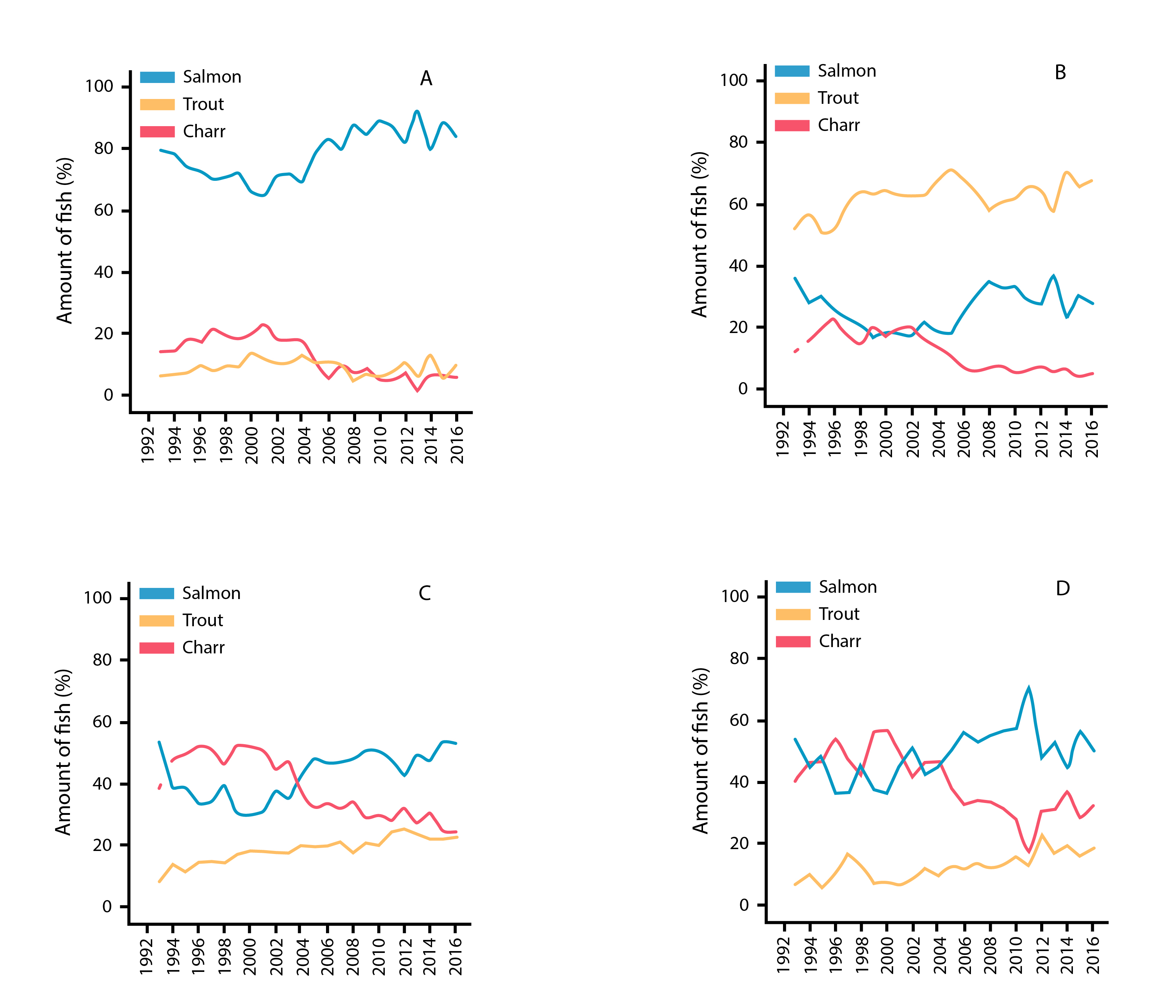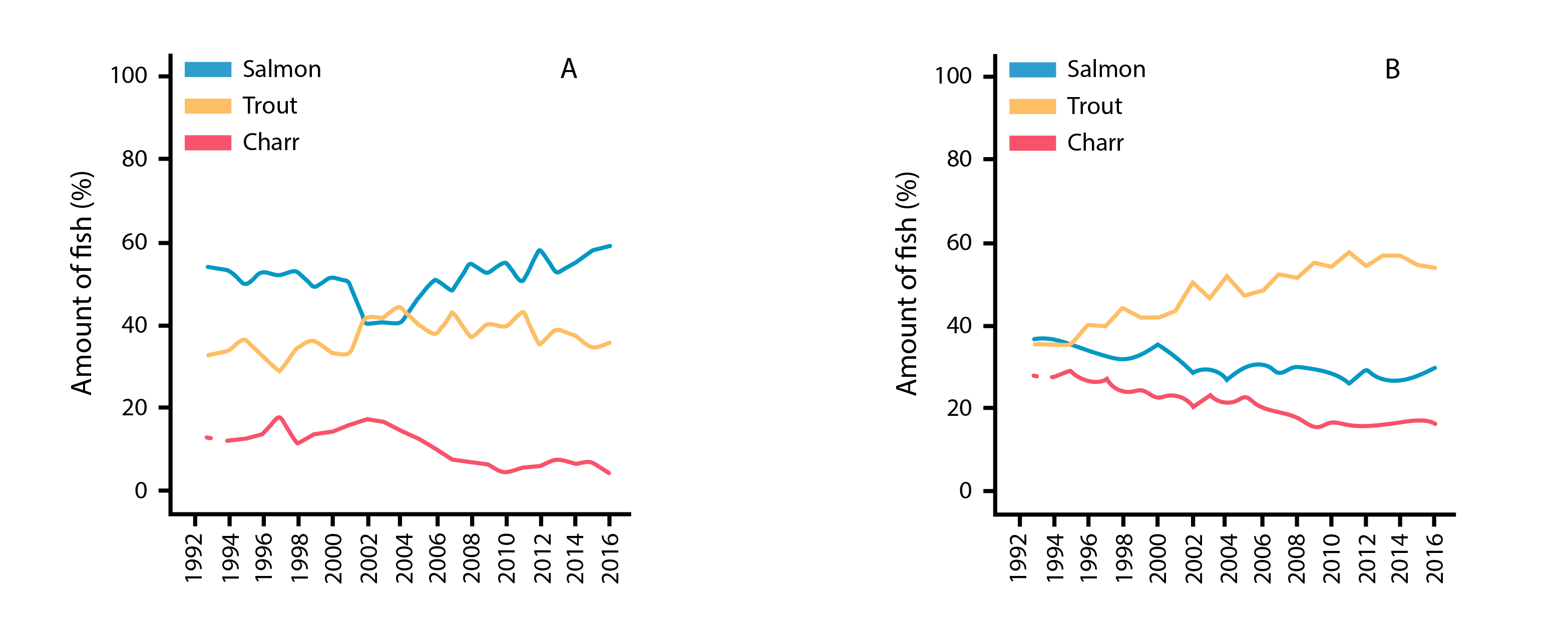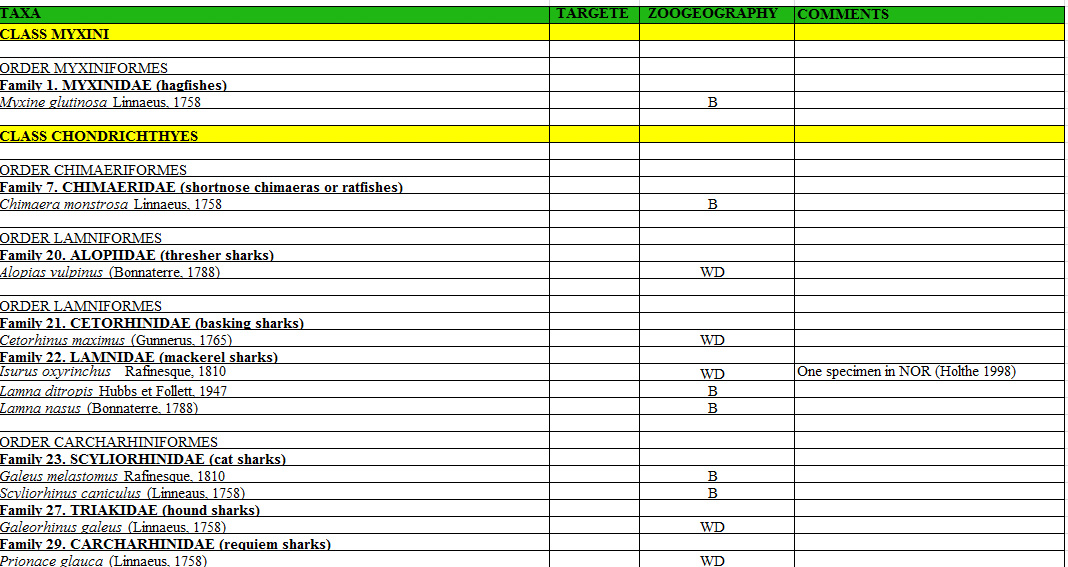Fish
Type of resources
Available actions
Topics
Keywords
Contact for the resource
Provided by
Years
Formats
Representation types
Update frequencies
status
Service types
Scale
-

Results from temperature preference experiments demonstrated that individual personality was consistent and repeatability. Individual preferred and maximum avoidance temperatures were significantly reduced in hypoxia compared to normoxia. Standard metabolic rate increased with temperature and body mass. Patterns of projected habitat change suggest the spatial extent of the current distribution of Carmine shiner would shift north with global warming. The understanding of habitat requirements and responses to climate will aid management and recovery efforts for this threatened species. Cite this dataset as: Enders, Eva. Data of: Carmine Shiner Conservation Physiology. Arctic and Aquatic Research Division, Fisheries and Oceans Canada, Winnipeg Manitoba. https://open.canada.ca/data/en/dataset/a6a606a4-8cdc-48e9-812c-7bdcd84840e7
-

PURPOSE: Scope the distribution of Smallmouth Bass in the Miramichi River Watershed using eDNA DESCRIPTION: This dataset contains the results of work undertaken from 2019 to 2024 to scope the extent of the spread of Smallmouth Bass in parts of the Miramichi River Watershed using an eDNA-based species-specific qPCR approach. USE LIMITATION: To ensure scientific integrity and appropriate use of the data, we would encourage you to contact the data custodian.
-

Temporal patterns in % abundance of Atlantic salmon, brown trout, and anadromous Arctic charr from catch statistics in Iceland rivers monitored from 1992 to 2016, showing results from (a) west, (b) south, (c) north, and (d) east Iceland. State of the Arctic Freshwater Biodiversity Report - Chapter 4 - Page 81 - Figure 4-41
-

Temporal patterns in % abundance of Atlantic salmon, brown trout, and anadromous Arctic charr from catch statistics in northern Norway rivers monitored from 1993 to 2016, including basins dominated by (a) rivers and (b) lakes. State of the Arctic Freshwater Biodiversity Report - Chapter 4 - Page 81- Figure 4-42
-

PURPOSE: These data have been updated following a Canadian Science Advice Secretariat (CSAS) Regional Science Advisory Process. Associated publications are available in the citation section below or will be posted on the Fisheries and Oceans Canada (DFO) Science Advisory Schedule as they become available. DESCRIPTION: Atlantic herring NAFO 4T biomass estimates for both spring and fall stock components. Values are provided in kilotons (kt) alongside with confidence intervals 50% (spring) and 95% (spring and fall). USE LIMITATION: To ensure scientific integrity and appropriate use of the data, we would encourage you to contact the data custodian.
-

PURPOSE: Monitor commercial landings of 4T Atlantic herring DESCRIPTION: Atlantic herring NAFO 4T commercial landings data. Landings (in metric tons) per year, per stock (spring spawners and fall spawners), per fishing season (spring and fall) and per gear (fixed and mobile). Two fish samples are taken per week per herring fishing area to determine stock identification (spring or fall spawners). Daily landings data are obtained from DFO Statistics Branch. Stock (spring or fall spawner) data are gathered from port sampling. USE LIMITATION: To ensure scientific integrity and appropriate use of the data, we would encourage you to contact the data custodian.
-
DFO’s Oceans and Coastal Management Division (OCMD) in the Maritimes Region has updated its fisheries landings maps for 2010–2014. These maps will be used for decision making in coastal and oceans management, including mitigating human use conflicts, informing environmental emergency response operations and protocols, informing Marine Stewardship Council certification processes, planning marine protected area networks, assessing ecological risks, and monitoring compliance and threats in coral and sponge closures and Marine Protected Areas. Fisheries maps were created to identify important fishing areas using aggregate landed weight (kg) per 2 x 2-minute grid cell for selected species/gear types. This dataset has been privacy screened to comply with the Government of Canada's privacy policy. Privacy assessments were conducted to identify NAFO unit areas containing data with less than five vessel IDs, license IDs and fisher IDs. If this threshold was not met, catch weight locations have been withheld from these unit areas to protect the identity or activity of individual vessels or companies.
-

Marine fishes in the Arctic Ocean and adjacent seas (AOAS).
-

Across the Canadian North, Arctic Char, Salvelinus alpinus, are culturally important and critical for maintaining subsistence lifestyles and ensuring food security for Inuit. Arctic Char also support economic development initiatives in many Arctic communities through the establishment of coastal and inland commercial char fisheries. The Halokvik River, located near the community of Cambridge Bay, Nunavut, has supported a commercial fishery for anadromous Arctic Char since the late 1960s. The sustainable management of this fishery, however, remains challenging given the lack of biological data on Arctic Char from this system and the limited information on abundance and biomass needed for resolving sustainable rates of exploitation. In 2013 and 2014, we enumerated the upstream run of Arctic Char in this system using a weir normally used for commercial harvesting. Additionally, we measured fish length and used T-bar anchor tags to mark a subset of the run. Subsequently, we estimated population size using capture-mark-recapture (CMR) methods. The estimated number of Arctic Char differed substantially between years. In 2013, 1967 Arctic Char were enumerated whereas in 2014, 14,502 Arctic Char were enumerated. We attribute this marked difference primarily to differences in weir design between years. There was also no significant relationship between daily mean water temperature and number of Arctic Char counted per day in either year of the enumeration. The CMR population estimates of Arctic Char (those ≥450mm in length) for 2013 and 2014 were 35,546 (95% C.I 30,513-49,254) and 48,377 (95% C.I. 37,398-74,601) respectively. The 95% CI overlapped between years, suggesting that inter-annual differences may not be as extreme as what is suggested by the enumeration. The population estimates reported here are also the first estimates of population size for an Arctic Char stock in the Cambridge Bay region using CMR methodology. Overall, the results of this study will be valuable for understanding how population size may fluctuate over time in the region and for potentially providing advice on the sustainable rates of harvest for Halokvik River Arctic Char. Additionally, the results generated here may prove valuable for validating current stock assessment models that are being explored for estimating biomass and abundance for commercial stocks of Arctic Char in the region.
-

Summary The Quebec region of the Department of Fisheries and Oceans (DFO) is responsible for the assessment of several fish and invertebrate stocks exploited in the Estuary and the northern Gulf of St. Lawrence. The commercial catches sampling program is one of the sources of information used to complete these assessments. The data collected by this program, at wharf or at sea, offers among other things the advantage of a relatively large spatio-temporal coverage and provides some of the necessary knowledge to assess the demography and the structure of the exploited populations. This program is implemented by specialized DFO staff whose main mandate is to collect biological data on groundfish, pelagic fish and marine invertebrate species that are commercially exploited in the various marine communities. Data This dataset on the yellowtail flounder (Limanda ferruginea) includes the metadata, sample weight, fish length, the sex and the number of specimens measured. This dataset covers the periods of 1992, 1995, 1997-2010, 2012-2013, 2015-2017 and 2019. In order to protect the confidentiality of the sources, some informations (such as those concerning the vessel) have been excluded and others (such as the date of capture) have been simplified. Entries where there was only one vessel in a fishing area for a given year were also excluded. Further information including the fishing areas coordinates can be found by clicking on the «Atlantic and Arctic commercial fisheries» and «Fishing areas» links below.
 Arctic SDI catalogue
Arctic SDI catalogue